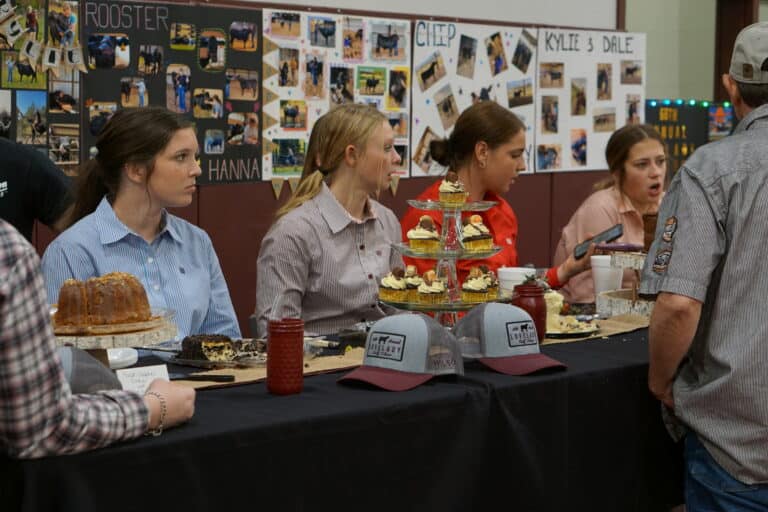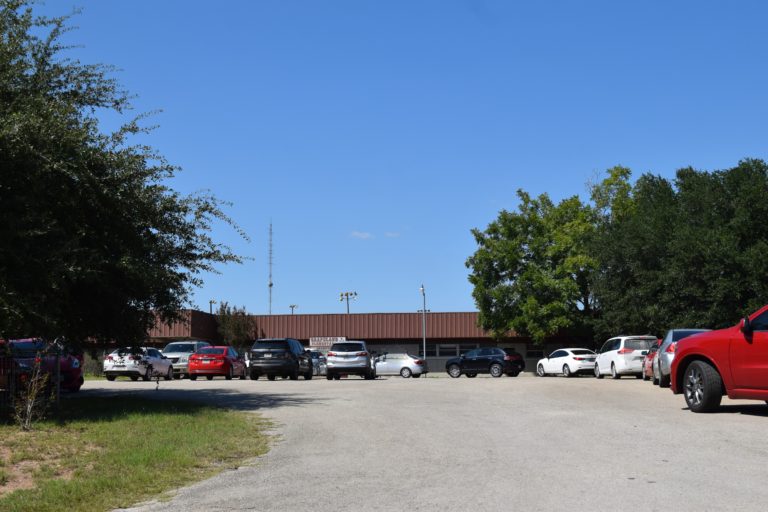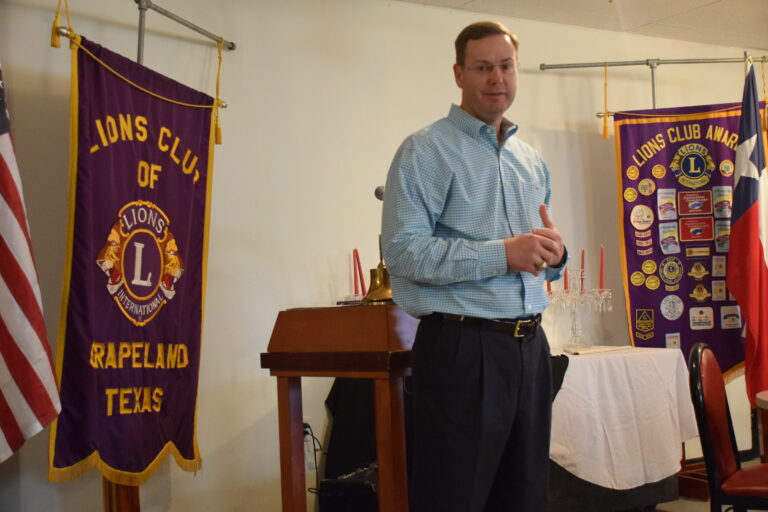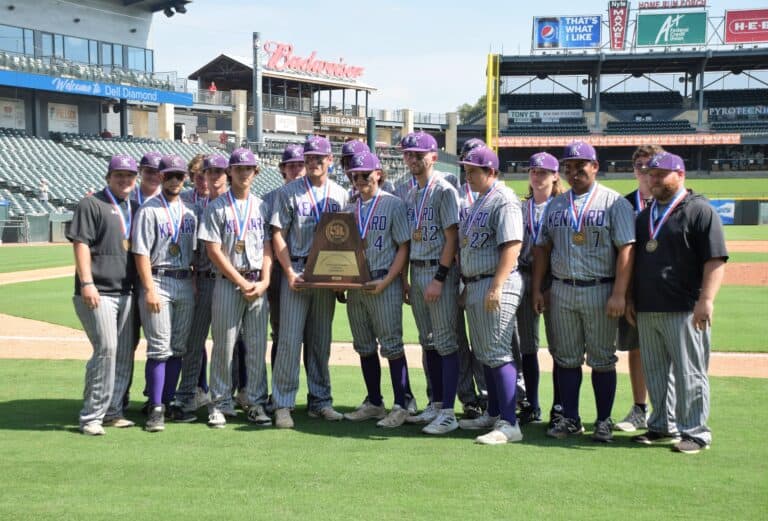What It Takes To Win
Latexo Continues Dynasty at State Math Competition in 2018
By Sarah Naron
Messenger Reporter
LATEXO – During the 2018 competition season, the mathematics teams of Latexo High School celebrated state championship victories for the seventh year in a row at both the Texas Math and Science Coaches Association (TMSCA) competition and the University Interscholastic League (UIL) competition.
“TMSCA is a statewide meet in March of every year,” explained LHS mathematics instructor Audrey Cravens. “The UIL competition is in May. We’re seven and seven for the two state meets.”
During her employment at LHS, Cravens has made great strides in improving the mathematics activities available to students of the school.
“When I first came to this school, like, 15 years ago, we did not have any pre-AP classes for math,” she recalled. “After a year or so, I started asking if we could start developing honors classes.”
The request was granted, and honors classes for Algebra I were the first to be introduced.
“Now, we have all of them – Algebra I, geometry, pre-cal,” Cravens shared. “We ended up having AB calculus so they can take the AB calculus exam and BC calculus so they can take the BC calculus exam so that they can get six hours of college credit toward their degree if they want to be an engineer or something like that.”
The establishment of the honors courses, Cravens said, was the first step in helping students develop the skills necessary for success in UIL.
“And we also, of course, practice,” Cravens added. “We have practice anywhere from zero to five days a week, depending on what’s going on at the time.”
When preparing for last year’s competitions, practices were held five days per week leading up to the UIL competition.
“It takes a lot of extra practice – in addition to the honors classes – to be able to win and be competitive at the state level,” Cravens pointed out.
Practices typically range in length from one to two hours.
“Last year, we would have two one-hour ones and three two-hour ones,” Cravens explained. “By the time we got to mid-February, we were having five two-hour practices a week.”
Cravens expressed a positive outlook on this year’s competition season.
“I have two seniors on my team this year, I have some sophomores and I’m starting to work with some freshmen,” she said. “The two seniors already know everything, so we’re in line to win one more time – hopefully, pretty easily.”
Continuing the winning streak beyond 2019, however, is “gonna become a challenge,” Cravens said.
“We haven’t had to work hard the last few years to win; it was easy for us to win,” Cravens explained. “We already knew our competition, so the kids have gotten more lax, and they don’t see how hard the old team members had to work to be able to win. The young ones haven’t seen it yet. If I threw them two-hour practices a day, they would kind of balk right now, whereas last year, no one would have minded.”
Cravens explained that she begins looking for potential team members even before the students have entered high school.
“I have teachers spying for me, and they start telling me about bright kids when they get them in seventh grade,” she said. “I actually used to coach the junior high calculator and number sense as well, and I would pick them up for UIL for the junior high competitions, but I quit doing junior high this year. So, I won’t get a dose of them until they’re in eighth grade.”
Following their completion of pre-AP Algebra I in eighth grade, students interested in competing upon starting high school are required to attend summer practices.
“I usually have practices several days a week for a month so that they can get a little bit ahead before the school year starts,” Cravens said.
In addition, students on the mathematics team – as well as other UIL teams hailing from LHS – attend frequent practice competitions.
“A lot of schools have cut their budgets for that,” she said. “A lot of people that I’m friends with that are heavy into UIL have been cut down to three or four practices meets a year.”
LHS, on the other hand, is permitted to attend “as many as we can stand to go to,” Cravens said.
“The school funds us to go to over a dozen practice meets a year,” she said.
As Cravens explained, five schools from each classification – 1A-6A – advance to the state competition each year.
“They get chosen by region,” she said. “There are four regions in the state of Texas, and the first-place team from all four of those regions goes to state. But the second-place team that is the highest of those four divisions gets to also go to state; they’re called wildcards.”
Some schools are also represented at the competition by individual participants.
“If you make it to regionals and you are first, second, or third-place individual, you can go to state in that competition,” Cravens said. “So, there’s five teams plus scattered individuals that compete.”
At the 2012 competition, Cravens said, LHS did not produce a first-place champion.
“I can’t remember exactly all the other years, but I believe I had the first-place kid,” she said. “You can get an individual place through the sixth place, and usually, at least three of the people on my team make it within the top six.”
Each year, Cravens takes five students – four participants and one alternate – to the state UIL competition, while the number of participants at the TMSCA state competition is limited to six.
“I can take as many kids as I want to TMSCA, but I make them score a certain score before I will take them,” she said. “I don’t want my peers or my competition to see anything lower than what I want them to see. It’s a game you play with your competition.”
According to Cravens, the hardest state championship to snag was the first, which was won by the school in 2012.
“There was another school called Lindsay in another region, and they’re really, really strong in mathematics and number sense,” she said. “They beat us out from going to state the year before, in 2011. So, it was real nice in 2012, because they had a higher score than us at regionals, and we went to the same regional competition and were competing against each other. We got wildcard, but then, we ended up turning around and winning state.”
All of the students who have participated on the school’s UIL math team from 2011-2018, Cravens said, has gone on to score “no lower than in the 97th percentile on their ACT or SAT mathematics” exam.
“Several have scored in the 99th percentile, which is the highest you can get,” Cravens shared. “They have lots of practice on all of the math curriculum – in addition to some additional math – and they stay fresh on it because we’re studying it all the time.”
Cravens recalled one student who tested while in the 11th grade and received a score in a percentile in the low 80s.
“After doing UIL with us for only the one year, they were able to make it to the 99th percentile,” she said. “So, that was the UIL practice – not just the intelligence of the kid – that helped them with their college stuff as well.”
Following the completion of their studies at LHS, Cravens continues to keep up with the students who participate on her state championship teams.
“I still have every one of their cell phone numbers, and I communicate with them about twice a year,” she said. “I see what job they got, if they’re making all A’s in college – I make sure I keep up with them, for sure.”
Many of the students, she said, are pursuing mathematics-related fields such as architecture and engineering.
“Most of them have also taken the AB and/or BC calculus exam,” she added. “On the AB test, the highest score you can make is a five. Everyone who has made the team has either made a four or a five on those AB calculus tests. So, they’re already in the third math class that a math engineering student would be in. We’re not talking about they needed college algebra, geometry, trig – they skipped all those, and then, they went straight to skipping the Cal I or the Cal II or both. So, it gave them a real head start in college.”
Participants on Latexo High School’s current events, informative speaking and persuasive speaking UIL teams have enjoyed their own share of success throughout recent years.
“In current events, we won state in 2010, 2011, 2014 and 2016,” Cravens divulged. “That’s coached by Kim Watson, and she also coaches the informative and persuasive speakers and the poetry and prose readers.”
The individual state championship winner for informative speaking in 2015 came from LHS, as well as the individual first-place winner for persuasive speaking in 2016.
“She (Watson) won the Speech Team Award in 2016, which is really hard to win,” Cravens added.
Each year, approximately a dozen students compete at the state level in various UIL events.
“We won second place team in current events last year, and one of my students won top individual,” Watson shared. “We’re preparing to beat our adversary, Sabine Pass, this year, so we’re going to be working after school a whole bunch.”
In 2015 and 2016, LHS was the second highest scoring district overall at the state competition.
“That was for all academic competitions, which also includes one act play competitions,” Watson said.
Watson added that the school is also working diligently to succeed at the 2019 one act play competition.
“We’ve got a great director that’s gone to regionals and missed regionals by one spot last year,” she said. “She’s a young lady that used to be in the theater here herself. She’s put in a lot of time and effort with both her groups – the junior high and the high school. I think they’re a really promising group of kids coming up.”
According to Watson, learning the value of hard work and how to persevere are among the biggest benefits students reap as a result of participation in UIL.
“They learn about giving up time and sacrifice and what it really takes to be a winner,” she said. “I think that goes with them to college and into work. They learn that nothing comes easy and you’re going to have to work hard if you’re gonna get it.”
Cravens also cited teamwork as another prominent lesson to be learned by UIL participants.
“The teams that we have are very cohesive,” she explained. “They put pressure on each other to make higher scores, because they want to win as a team. Some kids who aren’t involved in any kind of sport would just kind of be a loner without that, but we have a really strong group of academic UIL kids that hang around together, eat lunch together, go to competitions together.”
Sarah Naron may be reached via email at [email protected].







4.5